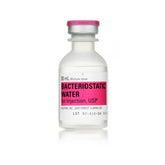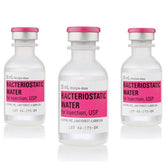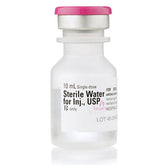Surgical masks have become a staple in both healthcare and everyday settings, helping to prevent the spread of infectious diseases by trapping droplets that are released when the wearer talks, coughs, or sneezes.
Understanding the differences between the levels of surgical masks as determined by ASTM (American Society for Testing and Materials) standards is crucial for choosing the right mask for the right situation. Let's review the various levels of surgical masks, focusing on their characteristics, usage, and why it matters to know the difference.
What are Surgical Mask Levels?
Surgical mask levels are categorized based on their performance in three key areas: bacterial filtration efficiency, fluid resistance, and breathability. These levels are defined by the ASTM, which sets international standards for materials testing. The levels help determine the most suitable environments for the masks' use, ranging from low-risk situations to high-risk medical procedures.
What is a Level 1 Procedure Mask?
Level 1 procedure masks are designed for general use and are the standard for low-risk, non-aerosol generating procedures. These masks are ideal for patient interactions and general dental or medical procedures where no fluids are expected. They provide a moderate barrier to large droplets and are tested for bacterial filtration efficiency of at least 95%. They are not suitable for high-fluid environments but offer adequate protection for everyday use in non-medical settings as well.
What is a Level 2 Procedure Mask?
Stepping up in protection, Level 2 procedure masks provide greater fluid resistance and bacterial filtration efficiency compared to Level 1 masks. These masks are suitable for procedures involving more fluid exposure, such as root canal treatment or blood draws. Level 2 masks must block at least 98% of bacterial particles, making them a safer choice for more invasive procedures than Level 1 masks.
Level 2 masks are distinguished by their enhanced breathability and comfort, despite increased fluid resistance. This makes them a practical choice for healthcare professionals who wear masks for extended periods. They strike a balance between safety and comfort without compromising on the essential protection needed in slightly higher risk environments.
What is a Level 3 Procedure Mask?
Level 3 procedure masks offer the highest level of protection among standard surgical masks. These are recommended for high-risk procedures, such as surgical interventions, that are likely to involve exposure to high levels of fluids, aerosols, and spray. Level 3 masks excel in situations where a high degree of fluid resistance and particle filtration is necessary.
These masks are designed to filter out more than 98% of bacteria and are also tested for splash resistance at higher pressures. Their use is critical in preventing the transmission of infectious agents during procedures that generate high levels of fluids and particles.
Comparison Between Level 2 and Level 3 Surgical Masks
While both Level 2 and Level 3 surgical masks provide high bacterial filtration efficiency, their use depends largely on the fluid resistance required. Level 3 masks are generally thicker and more robust, offering maximum protection against fluid penetration, making them ideal for major surgeries. In contrast, Level 2 masks are more adaptable to less intensive procedures but still offer substantial protection against moderate fluid exposure.
Choosing between a Level 2 and Level 3 mask should be based on the anticipated exposure to fluids and the necessity for particle filtration:
- Level 2 masks: Suitable for procedures with moderate fluid exposure.
- Level 3 masks: Necessary for high-risk environments where exposure to heavy fluids and aerosols is possible.
What is a Level 2 Barrier Mask?
Level 2 barrier masks are specialized surgical masks designed with both comfort and protection in mind. Unlike standard procedure masks, barrier masks provide additional protection against pollutants and are often used in both medical and public health settings. These masks combine the fluid resistance and bacterial filtration efficiency of Level 2 masks with enhanced features such as anti-fog strips or softer materials for extended wear.
Level 2 barrier masks are particularly useful in environments where wearers are exposed to both infectious agents and physical discomfort or where glasses fogging is an issue. Their design helps improve compliance with mask-wearing protocols by making the experience more comfortable for the wearer.
Conclusion
Understanding the various levels of surgical masks is essential for making informed choices about health and safety, particularly in environments where the risk of infection is high. Whether you are a healthcare professional or a member of the general public, choosing the right mask can significantly impact your protection against infectious diseases.
Always follow health guidelines and choose masks that best fit the specific needs of your situation. By staying informed about the differences in mask levels, you can ensure that you and those around you have the best possible protection in any scenario.











